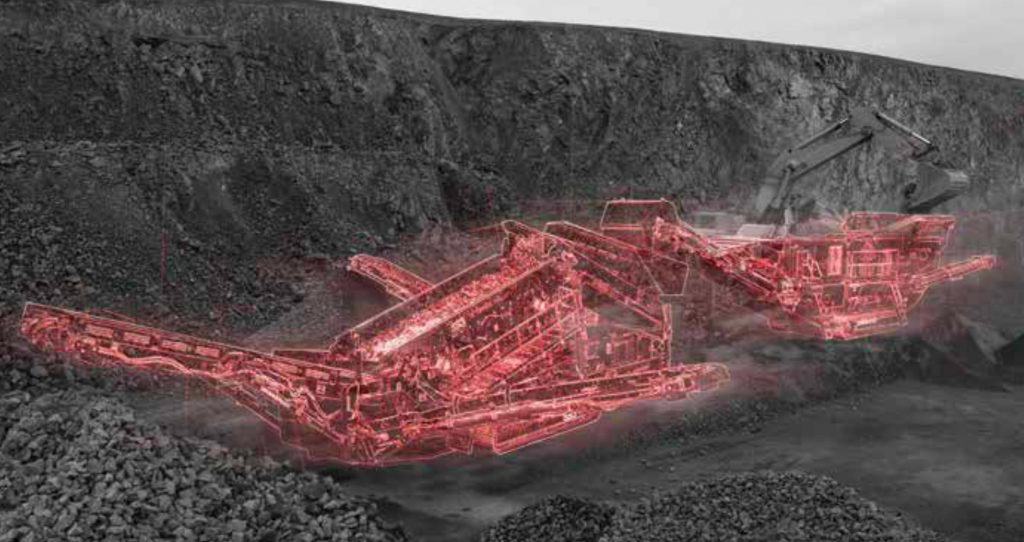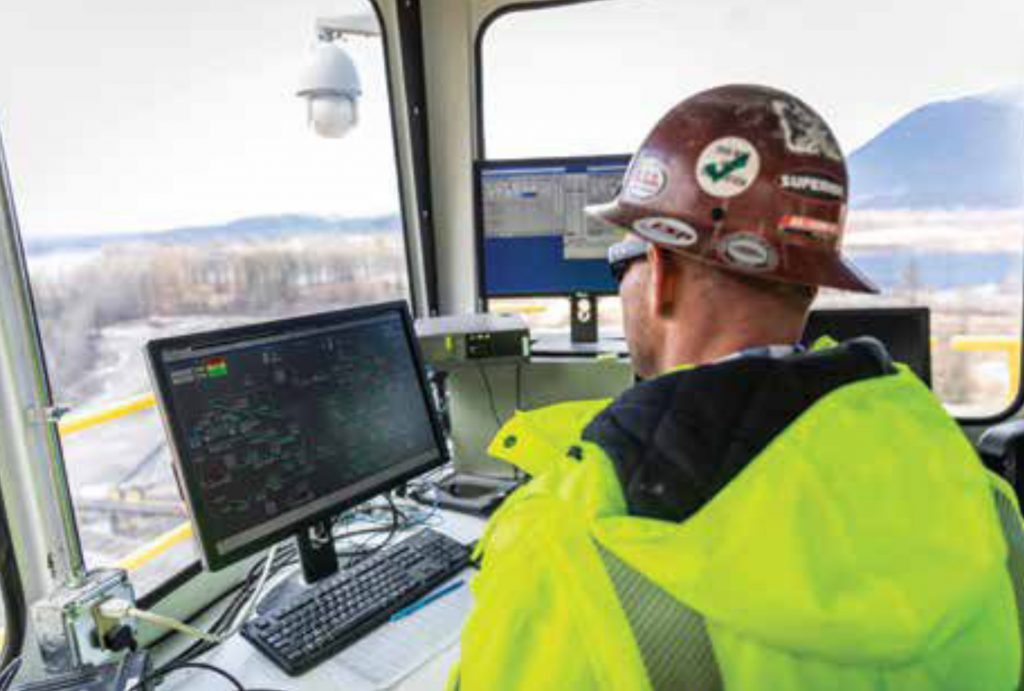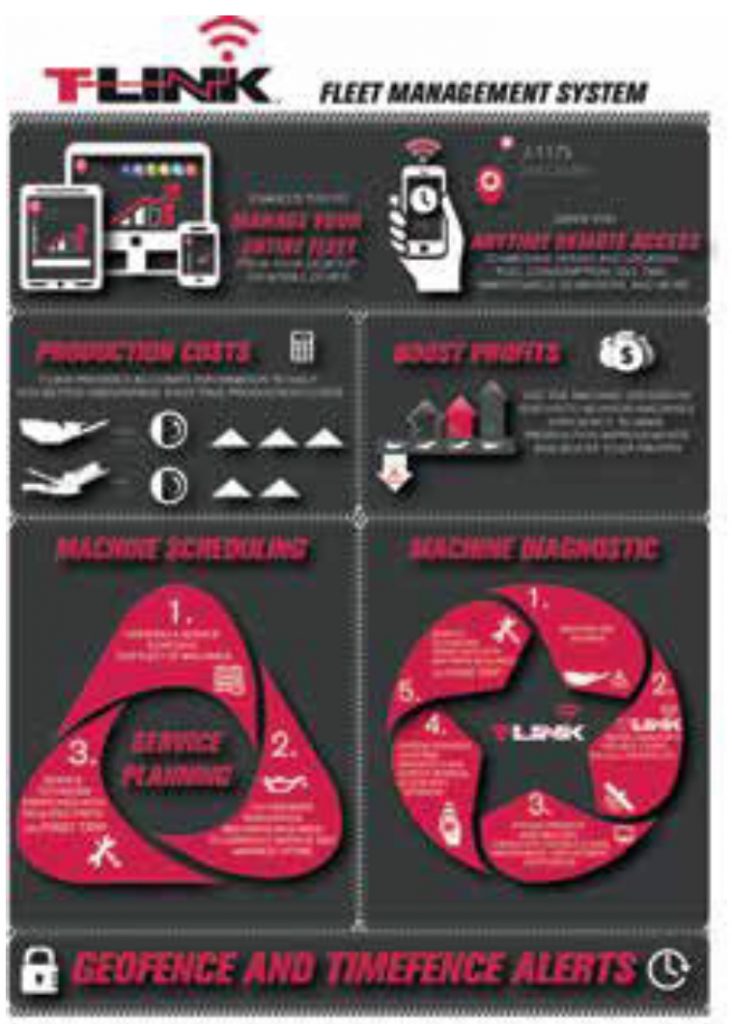
Features
Aggregates
Crushing Week
Technology
Crushing telematics: The latest advancements in equipment
July 6, 2021 By Andrew Snook
 Terex MP integrates telematics data with its parts portal to provide distributors real-time
visibility on items they need for upcoming service intervals on customers’ machines.
Terex MP integrates telematics data with its parts portal to provide distributors real-time
visibility on items they need for upcoming service intervals on customers’ machines. In the world of aggregate production, pit and quarry operators are always looking for ways to increase efficiencies while reducing costs. Telematics have been playing an increasingly significant role in crushing operations over the past several years, as OEMs introduce telematics into their equipment or update existing systems.
“As crushing equipment operates in challenging and often remote work environments, telematics enables equipment owners to stay connected and keep track of their equipment,” says Paul Morris, Terex MP telematics manager. “The proactive use of telematics provides the ability for us, as the OEM, to communicate and collaborate with our distributor and customer, using the transparency of the machine data to improve productivity, drive operational improvement, reduce idle time, mitigate downtime and drive service offerings — ultimately increasing financial gains and return on investment for the customer.”
One of the ways productivity is being improved through the use of telematics systems like Terex MP’s T-LINK is by using these systems to develop preventative maintenance schedules.
“Our customers are most interested in using telematics data to ensure accurate and timely machine maintenance,” Morris says.
Advertisement
“At Terex, we go one step further, integrating machine telematics data with our parts portal to provide our distributors with real-time visibility on exactly what items they need for upcoming service intervals on their customers’ machines. The system then shares what already exists in their dealer stock and provides the ability to order only the required parts with a click of a button.”

To ensure their telematics system meets the current and future demands of their customers, Superior Industries added a feedback program into its Vantage Automation System.
At Wirtgen telematics system works with an app that allows producers to customize their own service schedules.
“When their 500-hour, 1,000-hour or 2,000-hour service is coming up, they can set up an alert and log that service,” says Chris Clarkson, product support manager for Kleemann at Wirtgen America. “A few of our dealers will sell a maintenance contract with their customers, and to be able to track that better, will use our telematics system.”
Mike Schultz, crushing and screening product champion at Superior Industries, says that customers are increasingly relying on OEM telematics systems more to provide additional details related to scheduled machine maintenance and managing labour shortages.
“At times, there’s a lack of labour available, a lack of hours in the day,” he says. “It’s putting a lot more pressure on us to provide more details.”
To ensure their telematics system meets the current and future demands of their customers, Superior Industries added a feedback program into its Vantage Automation System.
“We currently have a survey program we’re running on our Vantage Automation System where we’re asking for feedback,” Schultz says. “We’re constantly looking for that end user and dealer feedback.”

Terex MP’s T-LINK can be used to develop
preventative maintenance schedules.
The ability to remotely monitor a fleet can be extremely valuable for several departments in a crushing operation.
“This is good for the plant manager or a maintenance manager to be able to pull up their cone crusher [for example] on their phone on an app and see what’s going on with that machine,” Schultz says. “We see that being really important on the regional level, especially – someone responsible for multiple quarries.”
Costs per tonne
Morris says customers use their telematics systems often to run cost analyses of fuel and throughput for accurate costs per tonne.
They also use the systems for monitoring machine operation to identify misuse or abuse, utilization trends and comparisons, and machine location, particularly for rental fleets.
Clarkson says fuel consumption is top of mind for many producers, and that having a telematics system that offers accurate fuel consumption reports is highly valuable to them.
“One of our biggest selling features is fuel per hour with our diesel-electric system,” Clarkson says.
“When we’re able to pull the fuel rate report after a demo, or after a month and show fuel savings, that’s one of the biggest selling features we’re able to provide for them.”
Troubleshooting
Another aspect of telematics that is assisting producers with reducing downtime is remote troubleshooting by OEMs and dealers.
“With telematics, if a customer is down, we can see active fault codes, too,” Clarkson says, adding that if a dealer or customer is having trouble troubleshooting an issue, Wirtgen America’s technical support team can help identify issues through the telematics system reducing the number of technician visits while improving uptime.
“You are effectively able to troubleshoot issues and increase your collaboration with factories and reduce your downtime,” explains Crissy Ram, senior director of marketing and business development at Frontline Machinery, a B.C. and Ontariobased equipment dealer representing the Keestrack, Terex Cedarapdis and GIPO brands of crushing equipment.
Security benefits
Geofencing is another valuable tool offered by some telematics providers, which offers equipment owners the ability to track the physical locations of their fleets.
“Let’s say they were told they could only crush in a certain territory, you can get alerts when it goes outside that geo zone,” Ram explains.
The ability to track a machine’s location isn’t the only security feature some telematics systems offer. In the case of Keestrak’s Keestrack-er telematics software, the crushing equipment can be shutdown remotely.
“I can shut down the machine in a worst-case scenario, or if a customer isn’t paying their bills in a rental scenario,” explains Darby Hunte, Frontline Machinery’s shop foreman and lead mechanic at the company’s headquarters in Chilliwack, B.C. “If it gets stolen, we can shut it down.”
Challenges
One major hurdle that OEMs need to overcome for the use of telematics in crushing operations is the remote nature of the business.
“The number one challenge is the environment in which crushing equipment operates — by the remote nature of many quarries’ geographical locations, they often have little or no cell coverage,” Morris says. “Because of this, all Terex equipment are fitted with dual band transmission, so that if cell coverage is not available, we have satellite backup connectivity.”
Another challenge is changing the mindset of the more traditional customers to adopt using the data provided by telematics and embed it in their businesses to improve outdated and inefficient processes, Morris adds.
The future
Morris believes that the focus of telematics for crushing operations will continue to evolve to drive further efficiencies in the coming years.
“While the key elements of telematics in terms of using data to improve productivity and predict maintenance will continue to be important, I think telematics will be enhanced in future years to provide remote machine operation, data-driven machine learning and self-diagnostics,” Morris says. “Furthermore, consistent with the global drive towards decarbonization, I believe telematics will play a vital role in supporting customers to monitor standardized government and regulatory emissions of their equipment.”
Print this page